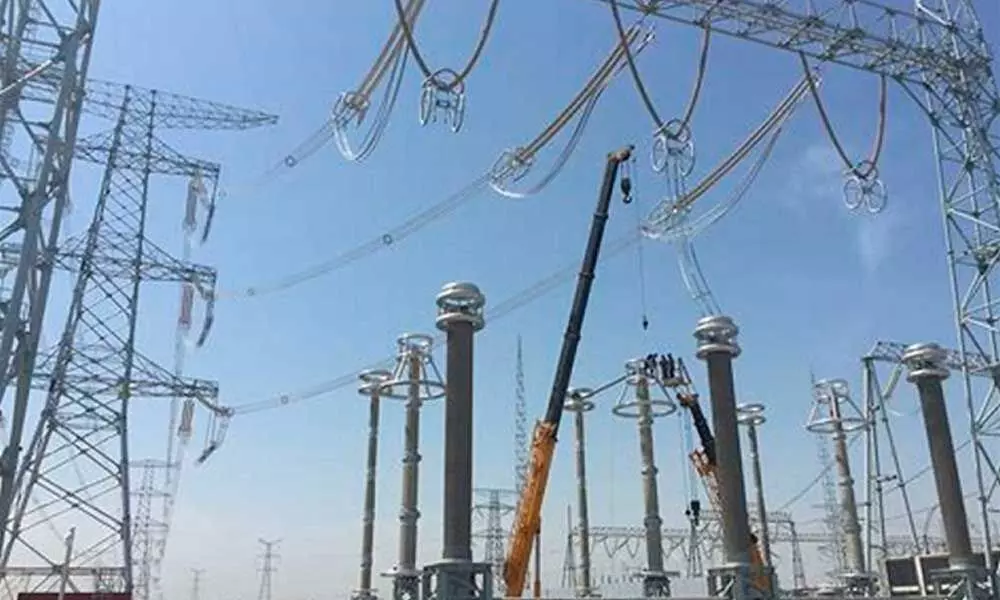Power sector limping back to normal
After a gap of six months, power consumption recorded a year-on-year growth of 4.4% in September and 11.6% in October, as per power ministry data
image for illustrative purpose

Ensuring 24x7 power supply in 2021, discoms financial health key challenges
New Delhi: Limping back to normal after bearing the brunt of the pandemic this year, the power sector needs a slew of reforms, especially implementation of consumer rules to achieve the government's ambitious target of 24X7 electricity supply for all in 2021, and also steps to improve the financial health of discoms. The most important task before the government will be to deal with the sickness of power distribution utilities (discoms), which are cash-strapped and unable to pay the electricity generation firms (gencos) for ensuring 24X7 power supply for all. There has been a cascading effect of the pandemic on power demand and revenue collection of discoms, a scenario that has aggravated the stress on the already troubled gencos.
There has been an issue with cash flow and finance of gencos due to delay in payments by discoms. Going ahead, central as well as state governments along with power regulators would need to be quick and decisive to respond to the evolving scenario as economic activities are unlikely to return to pre-Covid-19 levels immediately. This year, the government took concrete steps to reduce the stress in the power sector by announcing measures under the Aatmanirbhar Bharat package for liquidity infusion of Rs 1,20,000 crore for discoms to pay off gencos' bills till June 2020. For easing coal supplies, Letter of Credit (LoC) facilities were initiated. These measures helped the cash-strapped gencos to continue their operations without any disruption in coal supplies and meet their debt servicing obligations.
However, the discoms' financial sickness continues to plague the sector and impact its sustainability, despite the liquidity infusion of Rs 1,20,000 crore. As per latest data from the power ministry, total outstanding dues of discoms at the end of October 2020 was Rs 1,39,021 crore, which is 30 per cent higher than Rs 1,06,343 crore seen in October 2019. Talking to PTI, Director General of Association of Power Producers (APP) Ashok Khurana suggested that looking at the poor revenue collections of the discoms due to the impact of the pandemic on household incomes, the government needs to consider expanding the coverage of the 'liquidity window' to cover dues up to December 2020.
"Deteriorating financial health of distribution utilities remains a matter of concern for all. "However, we hope that initiatives such as greater emphasis on privatisation of (power) distribution, formulation of new tariff policy which contains several sector transformational measures and an increasing government focus towards electricity market-based products (coupled with regulatory initiatives on 'Market-Based Economic Despatch' and 'General Network Access') will help set the tone of revival and put the sector back on a sustainable growth path," he said. About ensuring 24X7 power supply across the country, Power Minister R K Singh told PTI that the Electricity (Rights of Consumers) Rules would ensure delivery of services.
The rules clearly mention that "to ensure reliability of supply, the discoms shall supply 24x7 power to all consumers. However, the Commission (power regulators) may specify lower hours of supply for some categories of consumers like agriculture". Earlier this month, Singh announced implementation of the rules to ensure the rights of electricity consumers and had asserted that "now the consumer is not powerless". The rules provide for penalties for discoms if they don't maintain the mandated standards of services under the Electricity (Rights of Consumers) Rules. The minister explained that the central as well as state regulators would fix the maximum time limit for power outages for different categories of consumers region-wise and the discoms will have to pay penalty to consumers for breaching them. Singh also said that consumers would get new power connections, testing of electricity metres and replacement of faulty metres within a stipulated time frame.
According to the rules, discoms would have to provide or modify an electricity connection within a maximum time period of seven days in metro cities; 15 days in other municipal areas and 30 days in rural areas. The government has taken many initiatives this year but the fact remains that the power sector is limping back to normal with inconsistent improvement in power consumption. After a gap of six months, power consumption recorded a year-on-year growth of 4.4 per cent in September and 11.6 per cent in October, as per power ministry data.
However, in November, the power consumption growth slowed to 3.7 per cent. The government had imposed a nationwide lockdown on March 25 to contain the spread of coronavirus infections and power consumption started declining from March due to less economic activities. The pandemic affected power consumption for six months in a row, from March to August. Power consumption on a year-on-year basis declined 8.7 per cent in March, 23.2 per cent in April, 14.9 per cent in May, 10.9 per cent in June, 3.7 per cent in July and 1.7 per cent in August. (PTI)
K K Shankar

